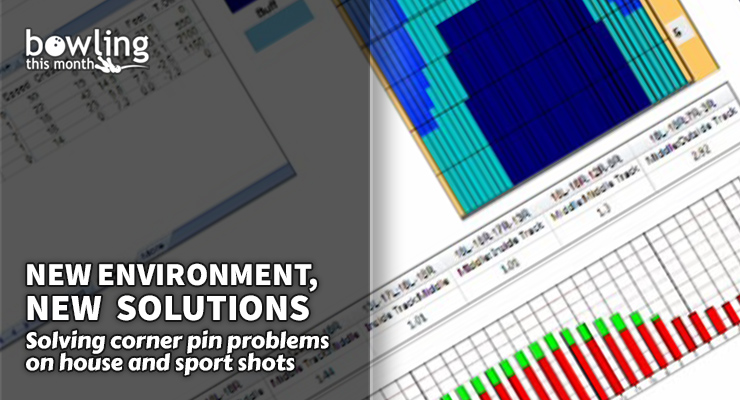Article Contents
- 1. Corner pins: the basics
- 1.1. Flat corners
- 1.2. Wrapped corners
- 1.3. My personal experience
- 2. Corner pins on house patterns
- 2.1. The wrapped 10 pin trap
- 2.2. Adjustments for the flat 10
- 2.3. Messengers and the flat 10
- 3. Corner pins on sport shots
- 3.1. Wrapped 10s and 180 games
- 3.2. What to do about it?
- 3.3. Flat corners on flat patterns
- 4. Conclusion
Note: This article is only available to Bowling This Month subscribers.
Let me start off this month’s article by stating how lucky I feel to be back writing for BTM. I stepped away from writing for a while, and I am thrilled to be back putting pen to paper and providing readers with insights from my experiences on and off the lanes around the world.
This month, we are going to talk about corner pins. We’ll discuss why we are leaving them in different environments and what we can do to get them to start falling. Corner pins have been the nemesis of bowlers for decades!
Before we begin, we must address the number one topic: are you bowling on a house pattern or a sport pattern? You might think, “What does that have to do with a corner pin? It is the same pin regardless of the oil.” This is where most bowlers get it wrong and where a different mindset comes into play. The pattern you’re bowling on is very much a factor when making your adjustments to the corner pin.
Corner pins: the basics
Due to how fast bowling ball technology has advanced, pocket hits have become more common for the average bowler, but we still need to pay attention to what happens when the ball doesn’t strike. With that in mind, let’s start by discussing the difference between a flat and wrapped corner pin.
Flat corners
A flat corner pin occurs when the bowling ball loses its energy before it hits the pocket, causing the 6 pin (the 4 pin for lefthanders) to lay flat in the gutter next to the accompanying corner pin.
This was a very common leave for many years before bowling ball technology advanced and helped bowlers create more entry angle. However, bowling ball coverstocks in today’s game have surpassed the technology in oils. It is now common that a highly aggressive bowling ball can leave more flat corner pins today because it has ...
Already a premium member? Click here to log in.


